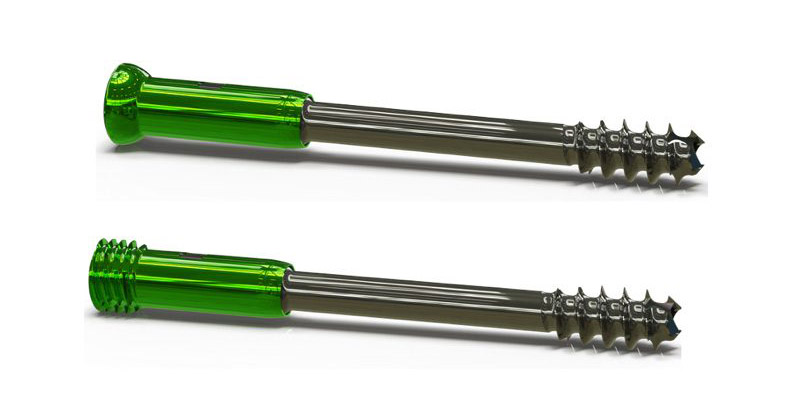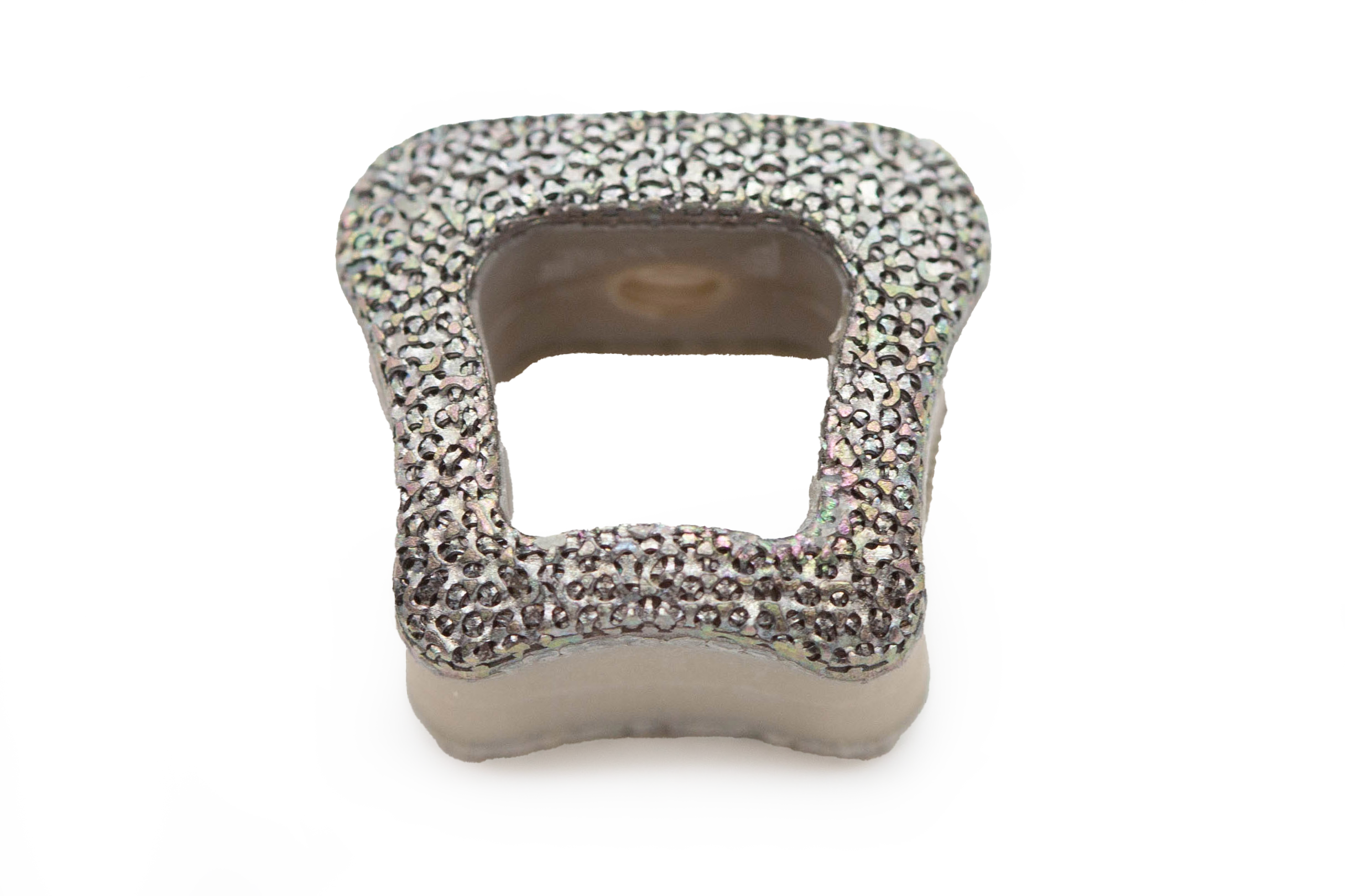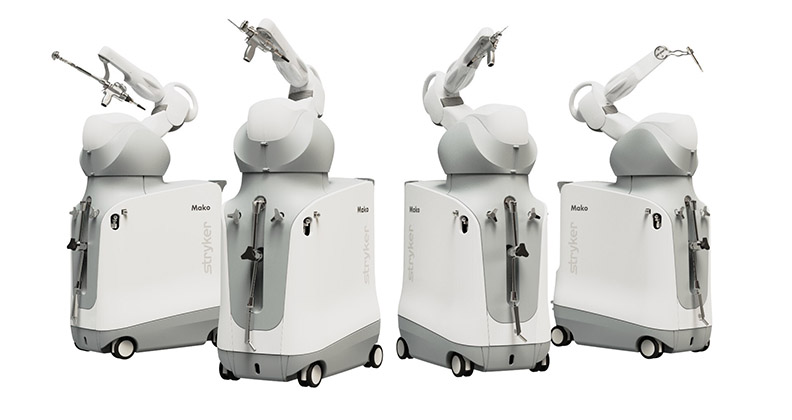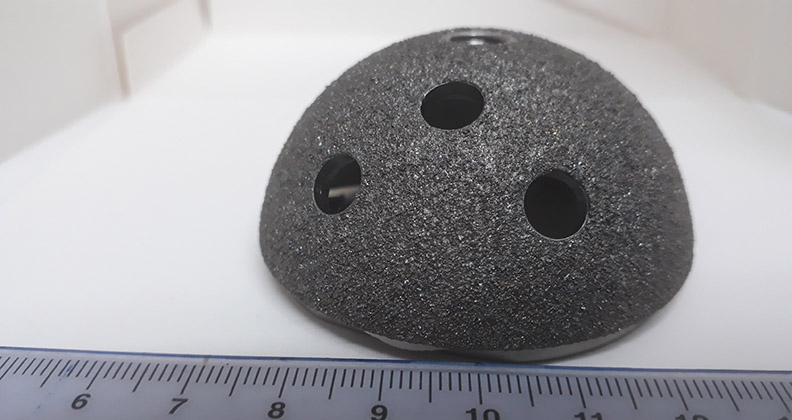
The design and development of orthopedic implants takes a significant amount of time, money and labor. According to Randy Roof, the President, CEO and Founder of Cutting Edge Spine (CES), it took five years for its proprietary T-FIX 3DSI Joint Fusion System to attain FDA 510(k) clearance, a triumph the company celebrated in July.
We recently spoke with Roof on navigating obstacles and roadblocks in the development of new orthopedic technologies. He started by providing background on the technology’s origins and function.
“Years ago, we internally launched an initiative to research the landscape relative to IP surrounding orthopedic fixation because we had a strong belief that optimal fixation for certain orthopedic applications was not available,” Roof explained. “We had exhausted our efforts with interbody devices, and we were essentially stuck in broadening our portfolio offering in that we were never going to develop another commodity screw system of any form. Our trabecular screw research and development initiative followed, including freedom to operate studies and extensive IP filing, which ultimately led to a patent being granted for all orthopedic applications. We have spent much time and money shoring up our IP position.
“The patent allows us to add any type of trabecular scaffold to our core patent-protected design(s) and will lend itself to a multitude of strategic opportunities within the industry,” Roof went on. “For certain applications, such as diabetic foot, complex spine, SI fixation, stand-alone interbody, geriatric hip screw, dental and craniomaxillofacial reconstructive surgery, this is potentially a ‘game-changing’ position relative to better fixation options for patients.”
The 3D-printed T-FIX 3DSI Joint Fusion System is part of the novel EVOL®-SI Joint Fusion System portfolio. The implants are designed to treat dysfunctions of the sacroiliac joint. The T-FIX 3DSI Joint Fusion System is FDA 510(k)-cleared for multiple approaches: Lateral, S2Al (S2 Alar Iliac), Open Posterior Bridging and Transgluteal Lateral.
What was the impetus for developing the 3D-printed T-FIX 3Dsi joint fusion system?
Roof: There were several reasons. As a group, we sit and discuss opportunities for better patient care on a routine basis. Then we select products we wish to develop. SI joint fixation can sometimes be problematic, and revisions are difficult with less than desirable options.
SI joint is such a fast-growing segment of spine. We know more and more revisions will be necessary if appropriate implants are not brought forth to market. Patients will pay the price, and that is not acceptable to us. We believed that applying our IP and design philosophy for optimal osseointegration to this specific segment would lead to enhanced patient care.
CES has been strategically invested in the SI fixation arena for several years. I say “strategic” because we entered this market segment after identifying it as an area where we could ultimately apply our trabecular IP in pursuit of better clinical results. With the EVOL®-SI Joint Fusion System, we strategically licensed a super hydrophilic HA-nano coating to validate this particular chemical component knowing that it would be offered with the T-FIX 3DSI joint fusion system.
We have collected two years of retrospective clinical data with autograft only on the EVOL®-SI Joint Fusion System, and the results are impressive. This has allowed us to better understand the contribution of the chemical coating from a fixation perspective. Adding the additional physical characteristics of T-FIX 3DSI joint fusion system screws should progress clinical efficacy, in our opinion.
We will be collecting the same data on the T-FIX 3DSI joint fusion system screws and compare them with the results of EVOL®-SI Joint Fusion System screws. They share the same chemical composition that has already proven to provide excellent fixation results near term and long term.
What were some of the challenges and opportunities you ran into with designing and manufacturing the implant?
Roof: We did not wish to develop and test the screw until a patent was granted, and we did our due diligence. Furthermore, we took a deep dive into the science behind osseointegration, as far as fixation is concerned. Once we identified the characteristics for optimal osseointegration and our patent was granted, we designed and manufactured our initial screws for preliminary testing.
Four additional rounds later and after numerous design changes, none of which were obvious, we passed preliminary testing. We then took the final design into 510(k) biomechanical testing. We are unique in that we have done three-point bending, four-point bending, and FDA required cantilever testing on the screw, so we know it well.
Another challenge was dealing with somewhat inexperienced 3D-printing manufacturers at the time, given that there were limited options. We are a small, insignificant player to some of them. Some of the entities we initially engaged were not capable of meeting our expectations even though they stated they could. We were extremely disappointed with our initial relations in this regard. The result was inconsistencies in output versus our design inputs and lost time due to such.
We now have an excellent relationship with our 3D-printing manufacturer. We trust that they know our technology and will provide us with excellent output and be responsive to our needs. This trust was built over time and by overcoming many challenges together.
There were several benefits to the above challenges. We had sufficient time to properly research the science behind optimal osseointegration. We became very well educated on our screw from a biomechanical testing perspective and the positive and negative outcomes associated with design changes. Additionally, we were able to better understand the challenges associated with 3D printing in general.
We’ve seen more SI joint implants that use 3D printing enter the market. Why is SI joint a good application for additive manufacturing?
Roof: Two Reasons: one, clinical, and two, financial. SI fixation has a history of failure/loosening, typically occurring in the sacrum, and revisions are challenging. Incorporating porous and trabecular features can afford quicker bony apposition to the implant and thus support better fixation. 3D manufacturing is the only way I know of to incorporate said features into a screw design.
One industry analyst just reported that the SI fixation segment did $539.30 million in 2021. The market is expected to grow at a CAGR of 19% from 2022 to 2030 to reach $2.49 billion. One could argue that this is the fastest growing segment of the industry. Naturally, we will see more and more products coming to market.
Do you have any advice on choosing a type of 3D printing-technology?
Roof: Be cautious when aligning with new 3D printers and manufacturers. It will take them time to learn and provide consistent output. There are only so many qualified engineers and machinists relative to this particular subject matter. I am somewhat concerned that we will see some product-related issues due to the rush to get into 3D printing.
Be diligent in your product testing. For example, just because “only” a cantilever test is required for 510(k) clearance, perhaps you should also perform three- and four-point bending tests to better understand your product’s strength. You can design some cool products with 3D printing. But are they science-based and will they stand the test of time?
I have seen a few 3D-printed screws, and I think, “What did they have in mind here?” The 3D printing of screws can be more expensive than traditional manufacturing. Hospitals are not necessarily paying higher prices for better products, so this is obviously a problem.
Companies hit roadblocks all of the time when developing new products. What is the role of the leader in these situations?
Roof: I am a firm believer that “winners find solutions.” Support your team through failures. Keep encouraging them to explore any and all things outside of the box from a development perspective. I have a team of winners. We focused on learning from our failures, which helped us overcome many roadblocks over time.
In retrospect, I look back to NASS several years ago when we displayed a trabecular screw based on our IP. Many engineers stopped and said, “Looks nice, but you will never get it to work.” Well, this tiny team at CES did get it to work! Next up: applying the IP to different applications as we can integrate any type of porous scaffold.
PM
Patrick McGuire is a BONEZONE Contributor.




